#alice marwick
Text




53 notes
·
View notes
Text

Nur Masalha (نور ﺍﻟﺪﻳﻦ مصالحة), Palestine: A Four Thousand Year History, Zed Books, London, 2018
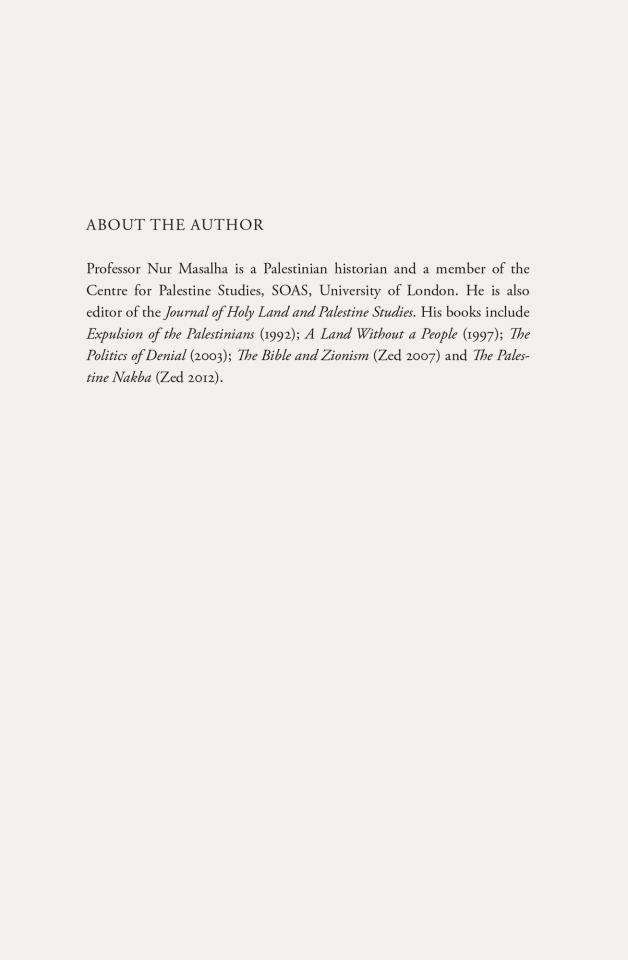
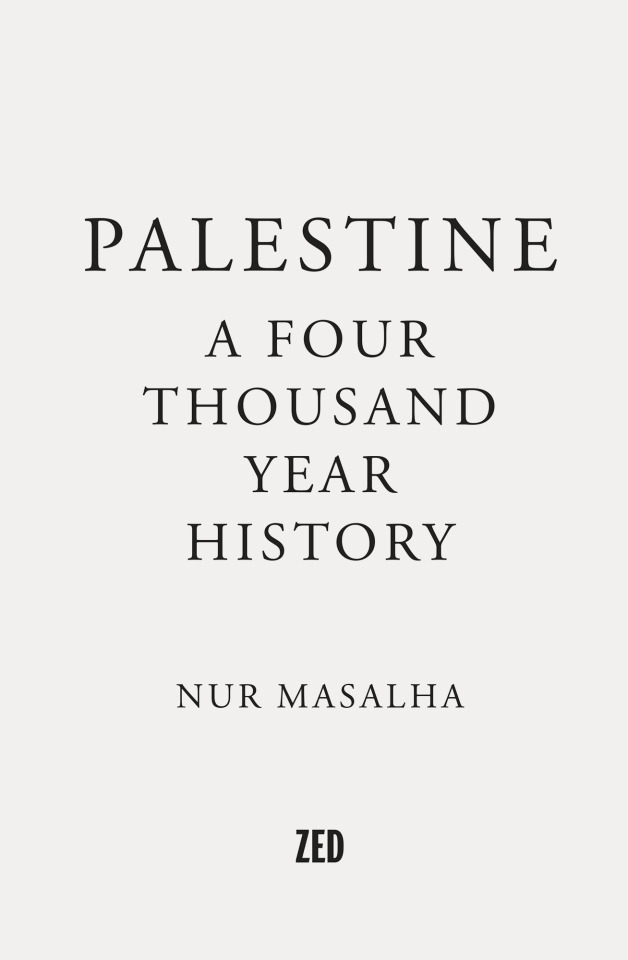
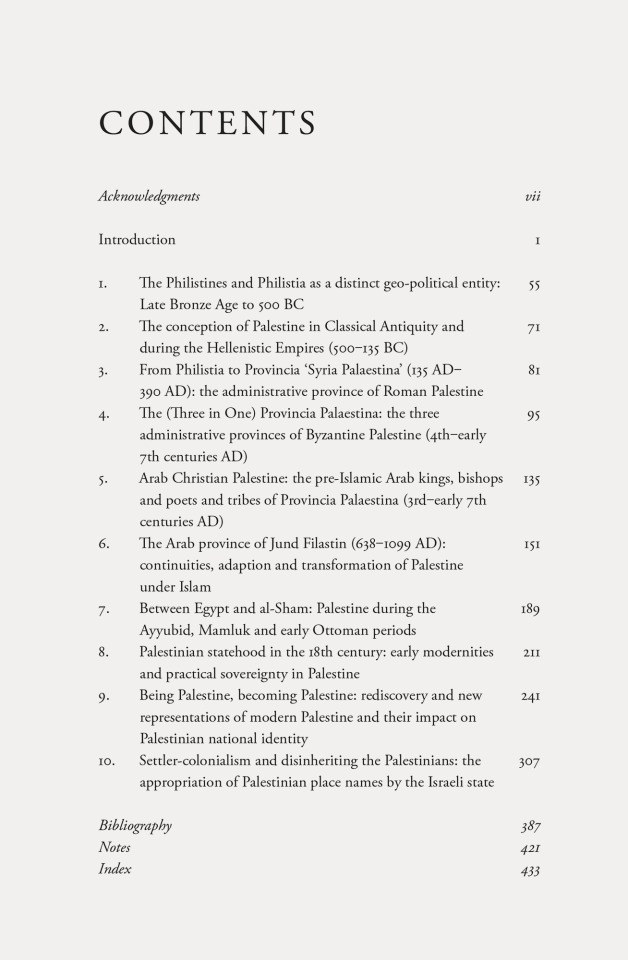
Cover Design: Alice Marwick
Cover image: Mosaic map of Palestine and detail of Jerusalem [Civilisation of Palestine, 5th Century BC. ©DEA Picture Library]
#graphic design#history#historiography#book#cover#book cover#nur masalha#centre for palestine studies#alice marwick#zed books#2010s
47 notes
·
View notes
Text
in honor of pride month: some queer head canons for septimus heap characters!!
Septimus (first of course): aroace king! he is so the type to just have a bestie moment with jenna and beetle and just hang around them all the time but never need something for himself. He just reallyyyyyy likes learning about magyk and going on adventures with his friends!! (also the apprentice and extraordinary wizard colors are green and purple so like..)
Jenna: huuuuuuge bi energy (shout out to that scene from darke 👀). she just gives huge idgaf energy.
Beetle: with a name like this he is not cisgender. bro has the most he/they energy. Both my brother and I lovee this lil guy.

there's nothing heterosexual or cisgender about this image. Also he gives huge bi energy. I think he's in a qpr with septimus while having his bi4bi with Jenna.
Marcia: the lesbian parental figure to ever. I don't have thoughts besides that this woman is not straight in any way.
Milo: polyamorous and asexual. This guy probably loves a lot of his higher ups in his crew. Why else would he be so chill being at sea all the time?
Lucy: demisexual & demiromantic (doesn't really know her attraction past that because she's only ever been into Simon). big she/they energy
Alice Nettles: any pronouns nonbinary and pan
Alther: just queer, bro does not like labels
Zelda: aromantic and lesbian. She'd probably drop something to septimus or wolf boy being like yeah when I was younger I was very popular with the ladies at the port. and they'd just be like :0
Marcellus: bro is so homosexual. The gay man to ever. good for him honestly. But he is such a hermit and introvert he really doesn't make many connections or have any meaningful relationships ://
Merrin: totally trans fem. she is so uncomfortable and emo about having to present as a guy and have a name she doesn't like that she gets into darke stuff to cope. credit to @septimus-heap for this post and pointing this out to me, you make a good point.
Wolf Boy: very aroace furry energy. also I feel nonbinary with some neopronouns to do with being raised by wolves and feeling like one of them. I also feel like being keeper of keeper cottage kinda requires a person to be aromantic because you're literally not allowed to get married so it's way better this way. Also probably in a qpr with septimus but yk it's pretty long distance so doesn't always work. but when they do get together bro is it lit.
Sam Heap: Ace and gay. Bro was sooooo confused about why the other forest heaps were so enamored with the wendron witches. He just really likes fishing.
and to finish it off strong
Jim Knee: canonically nonbinary gender fluid. Also the most gender nonconforming and outwardly queer person represented honestly. He's very flamboyant in his current appearance and iteration which is iconic. And I think it's really funny he just decided to be a guy because Merrin called him Jim Knee so he just went with it.
#septimus heap#jenna heap#o beetle beetle#marcia overstrand#alther metha#milo banda#lucy gringe#alice nettles#zelda heap#marcellus pye#merrin meredith#marwick#sam heap#jim knee#i love them all#huge shout out to this series#also I'm rereading this after having not read it for like almost a decade so I don't remember much past where I am now in Darke#but yea queer rep we gotta make for ourselves rip#asexual#aromantic#queer#bisexual#nonbinary#transgender#gay#polyamorous#genderfluid#demisexual#demiromantic#lesbian
15 notes
·
View notes
Text
First, privacy is networked; second, it is unequally distributed; and third, these concepts are connected. Thinking about privacy as networked exposes our powerlessness to command how our personal information spreads through networks that we can never fully control.
Alice E. Marwick, "The private is political"
2 notes
·
View notes
Text
Week 10: Digital Citizenship and Conflict: Social Media Governance
Social media has become a ubiquitous part of our lives. It has transformed the way we interact with each other, share information, and consume news. However, the rise of social media has also led to the emergence of new challenges and problems, such as the spread of disinformation, the amplification of hate speech, and the harassment of marginalized groups.
In recent years, researchers have focused on the issue of social media governance, which involves the development of policies and practices that can help mitigate the harms of online hostility. Three recent studies shed light on different aspects of social media governance and provide insights into the challenges that need to be addressed.
The first study, conducted by Haslop, O’Rourke, and Southern (2021), examined the prevalence of harassment in UK student online culture. The authors found that online harassment was often tolerated and that women were disproportionately targeted. The study highlights the urgent need for effective social media governance policies that can protect marginalized groups and promote a culture of respect and civility.
The second study, by Rich and Bujalka (2023), analyzed the appeal of the so-called "manosphere," a subculture of men who reject mainstream ideas of masculinity and advocate for men's rights. The authors argue that the manosphere's appeal lies in its ability to provide a sense of belonging and community for men who feel lost and alienated. However, the manosphere is also associated with misogyny, racism, and other forms of hate speech, which can have harmful effects on individuals and society. The study suggests that social media platforms need to develop effective governance strategies that can address the harmful aspects of the manosphere while preserving its positive aspects.
The third study, by Marwick and Caplan (2018), explored the use of language in online harassment and the role of the manosphere in networked harassment. The authors argue that the manosphere employs a particular language and rhetoric that can be used to harass and intimidate women and other marginalized groups. The study highlights the need for social media governance policies that can effectively address the use of language and rhetoric in online harassment.
Taken together, these studies provide valuable insights into the challenges of social media governance. They underscore the need for effective policies and practices that can mitigate the harms of online hostility, protect marginalized groups, and promote a culture of respect and civility. Effective social media governance is essential for creating a safe and inclusive online environment, and it requires the collaboration of various stakeholders, including social media platforms, governments, civil society organizations, and individuals.
Reference:
Haslop, C., O’Rourke, F., & Southern, R. (2021). #NoSnowflakes: The toleration of harassment and an emergent gender-related digital divide, in a UK student online culture. Convergence, 27(5), 1418–1438.
Ben Rich and Eva Bujalkagence (2023) 'The draw of the ‘manosphere’: understanding Andrew Tate’s appeal to lost men'. The Conversation February 13
Jay Thompson (2023) 'New journalism research will help mitigate the harms of online hostility. Media Release, ANU.
Alice E. Marwick & Robyn Caplan, 'Drinking male tears: language, the manosphere, and networked harassment' Feminist Media Studies Volume 18, 2018 - Issue 4: Pages 543-559
4 notes
·
View notes
Text
Week 10: Digital Citizenship and Conflict: Social Media Governance
When it comes to online disputes and harassment, the control of social media sites has emerged as a major concern in the intricate realm of digital citizenship. Keeping conversations civil and secure is a growing concern as more and more people use these online venues. New research and conversations have shown the complexities of cyberbullying, gender gaps in digital access, and the approaches taken by governments to address these problems.
An emerging gender-related digital divide is brought to light by the worrisome tolerance for harassment that is shown by Haslop, O'Rourke, and Southern's 2021 research into UK student online culture. Their research highlights the importance of stronger social media regulations to safeguard vulnerable users and promote an inclusive digital space (Haslop et al., 2021).
As mentioned by Ben Rich and Eva Bujalkagence in 2023, the'manosphere' and figures like Andrew Tate show how some online subcultures appeal to people who are looking for a place to belong. This highlights the significance of identifying and resolving the causes of online animosity in order to lessen its negative effects (Rich & Bujalka, 2023).
The development of techniques to reduce online antagonism is hinted at in Jay Thompson's 2023 media release about new journalism research. To maintain online communities as places for constructive debate, such measures are essential (Project & [email protected], 2023).
Kenneth Reinicke's analysis of men's responsibilities in the aftermath of #MeToo prompts a critical examination of online allyship and the struggle against sexual harassment. To better control social media in a way that helps victims and promotes positive behaviour change, it is crucial to understand these dynamics (Reinicke, 2022).
Exploring the terminology and techniques employed to sabotage feminist efforts, Alice E. Marwick and Robyn Caplan's research on networked harassment within the'manosphere' provides valuable insights. Better governance techniques to reduce harassment of this kind can be informed by an analysis of these tactics (Marwick & Caplan, 2018).
Social media sites must now do more to combat cyberbullying and other forms of online harassment if they are serious about protecting their users and creating an inclusive environment, according to a 2020 report by Plan International on the experiences of girls and young women online (Albrectsen, 2020).
It is our responsibility as digital citizens to think critically about these concerns and rally behind initiatives to improve social media regulation. We can all do our part to make the internet a better, safer place for everyone by speaking out against harmful policies, funding important research, and having civil conversations with one another online. Users, platforms, lawmakers, and researchers must all work together to overcome the obstacles in our linked digital environment and achieve better digital citizenship and social media governance.
References
Albrectsen. (2020). THE STATE OF THE WORLD’S GIRLS 2020. Swinburne University of Technology; Swinburne University of Technology. file:///Users/hanhtrang/Downloads/Plan%20International%20Free-to-Be-Online-2020.pdf
Haslop, C., O’Rourke, F., & Southern, R. (2021). #NoSnowflakes: The toleration of harassment and an emergent gender-related digital divide, in a UK student online culture. Convergence: The International Journal of Research into New Media Technologies, 27(5), 1418–1438. https://doi.org/10.1177/1354856521989270
Marwick, A. E., & Caplan, R. (2018). Drinking male tears: language, the manosphere, and networked harassment. Feminist Media Studies, 18(4), 543–559. https://doi.org/10.1080/14680777.2018.1450568
Project, F., & [email protected]. (2023, March 17). New journalism research will help mitigate the harms of online hostility. Freilich Project for the Study of Bigotry; Freilich Project for the Study of Bigotry. https://freilich.anu.edu.au/news-events/blog/new-journalism-research-will-help-mitigate-harms-online-hostility
Reinicke, K. (2022). Introduction. Men after #MeToo, 1–24. https://doi.org/10.1007/978-3-030-96911-0_1
Rich, B., & Bujalka, E. (2023). The draw of the “manosphere”: understanding Andrew Tate’s appeal to lost men. The Conversation; The Conversation. https://theconversation.com/the-draw-of-the-manosphere-understanding-andrew-tates-appeal-to-lost-men-199179
0 notes
Text
5th Stop: Is Kim K Slave to Her Own Body or Vice Versa?
The secret to the Kardashian empire is that they maintain the perfect balance on the fine line between two sides of every problem that they have created. Pro-feminist or anti-feminist, sexual liberation or pornification, in control or objectified? Kim K is not any woman; she is at the frontier of these controversies and is clever enough to stay in-between space or flux between the bound and unbound, which finally breaks the binaries and creates new feminine identities for the contemporary workers of glamour labour.
She is wearing her body, and you will follow her
In the new era of post-fashion, ‘[e]ffortless is no longer the goal – now, a body has to look like the product of work’, the kind of work evidenced by Kim Kardashian’s effortful body,” Hyland (2015).
This is a departure from the role of glamour in the past, where the point was to hide the work, and to make it look like it was natural and effortless.
By revealing her effort, Kim shows us how she is the all-American girl with an all-American work ethic, and if we just work hard too, we will make it like she did. Her overarching message is that you gotta work it, so you can be like me! Play my game, and you will be training yourself for the life of glamour: Practice here, and if you play the game right in real life, you can achieve the dream of fabulous wealth, fame, and an enviable lifestyle. How do you get all of this? Photoshop, filters, cosmetic surgeries, heavy editing, personal trainers, makeup, cucumber salad, skincare, poses, and designed clothes—all of which are the labours that we sacrifice without thinking to be just an ounce like the Amerian billionare family.

Kim’s attitude exudes the idea that we are just girlfriends hanging out, just let her show you: ‘Here is how you do make-up like mine’. Her feed is populated by photos and videos of her sharing instructions about how to get her look, achieve a body like hers, and dress it as she does. The tone is friendly, instructional, encouraging, and luring. By now, Kim’s make-up tutorials have become quite well known, so notorious in fact that they make it onto several 'make-up trends to leave behind’ every year.
To attain similar success, the consumption of specific fashion and beauty products is needed. Kim’s minions do not know exactly why Kim is on such a high social ladder; whether it is because of her provocative appearance, acts of female liberation and empowerment, or sex-positive attitudes, they just replicate her as much as they can to become like her. And slowly, they learn to hate their bodies, because it is only when they cannot stand their looks that they become loyal consumers of the ever-expanding beauty industry.
An Empire Built on Glamour

‘Glamour labour’ is the work to edit the self and body so that one appears to be the highly scripted, filtered, and carefully constructed image, which so many work so hard to create and present online (Wissinger 2015).
In 2012, communication scholar Gina Neff described the ‘give it all to have it all’ imperative of highly uncertain ‘venture labor.’ Recent scholarship has documented how this imperative has spread via social media technologies, whose promises of easy success lure many to work hard at putting themselves out there. Media studies scholar Alice Marwick (2013) noticed this trend in the promotional labour needed to achieve high online status. Similarly, communication scholar Sarah BanetWeiser (2012) tracked the spreading imperative to build one’s online brand, with women and girls feeling these pressures most keenly. As communication professor Brooke Duffy’s (2015) study of fashion bloggers shows, the ‘romance of work’ plays on worker’s aspirations to achieve the good life, where work is play and play is work, and good things come to only a few of the many who mercilessly perform their lives to supply their endlessly voracious Instagram feed.
As these studies show, in the digitized world, many are willing to give up much for glamorous work. Forget job stability, health insurance, or even pay! If you can be on the inside of the media machine, you are one step closer to the glittery riches it promises to all, yet rewards to very few. The game is rigged, yet, in a neo-liberal world, failure is always your fault. If you experience society as racist, classist, or sexist, it is only because you are not working hard enough. It is up to you to fix your life, to build your brand, and to become the kind of famous person who reeks of success.
Over-sharing, a Kardashian specialty, takes on a glamorous sheen, when coupled with the trappings of the celebrity lifestyle that the family has achieved by seeming to do nothing.
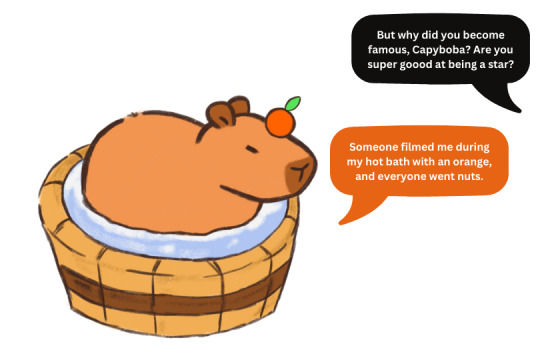
The Kardashians’ joyful abdication of the right to any privacy at all, paves the way towards normalizing the loss of privacy rights, drawing us into the world where the ‘“likes”, clicks, and tweets that can be earned by sharing’ seduce us into what legal scholar Bernard Harcourt (2015) has called a 'mad frenzy of disclosure’ (pp.18) as we buy into the discourse of ‘datafication’ (pp. 21). Self-tracking taps into the voracious desire for self-improvement, providing new fodder for the ongoing practices of online self-documentation, as we post our step scores, tweet our opinions, Facebook our vacation, and Instragram pictures of our dinner plates. Insidiously, our loss of privacy is what the Kardashians hide in plain sight.
Glamour labouring to chase an ever-receding ideal of looking right, feeling right or being in the right circle, where the desire for pleasure trumps the need for privacy, leaves us as routinely exposed as Kim Kardashian’s backside. Perhaps, it's not Kim who is enslaved by her body, but rather, it is us who workship, resent, and invest so much in ours.
Reference list
Alice Emily Marwick 2013, Status Update: celebrity, publicity, and Branding in the Social Media Age, Yale University Press, New Haven.
Banet-Weiser, S 2012, AuthenticTM the politics of ambivalence in a brand culture, New York, N.Y. New York University Press.
Duffy, BE 2016, ‘The Romance of Work: Gender and Aspirational Labour in the Digital Culture Industries’, International Journal of Cultural Studies, vol. 19, no. 4, pp. 441–457.
Harcourt, BE 2015, Exposed: Desire and Disobedience in the Digital Age, Harvard University Press, Cambridge, Massachusetts.
Hyland, V 5AD, What the Rise of the Couture Body Means for Fashion, The Cut, viewed 10 November 2021, https://www.thecut.com/2015/05/rise-of-the-couture-body.html.
Neff, G 2015, Venture labor: Work and the Burden of Risk in Innovative industries., Mit Press, Cambridge.
Stevenson, T 2019, ‘The Kardashian complex: Performing Sexuality and Femininity through Image and Screens’, Scope: Contemporary Research Subjects (Art & Design 17).
Wissinger, E 2015, This year’s model : fashion, media, and the making of glamour, New York University Press, New York.
0 notes
Text
Disinformation Researchers Fret About Fallout From Judge’s Order
A federal judge’s decision this week to restrict the government’s communication with social media platforms could have broad side effects, according to researchers and groups that combat hate speech, online abuse and disinformation: It could further hamper efforts to curb harmful content.
Alice E. Marwick, a researcher at the University of North Carolina at Chapel Hill, was one of several…
View On WordPress
0 notes
Text
[ad_1]
Fb not too long ago added a brand new report back to its transparency heart. The "broadly seen content material" file was once ostensibly intended to make clear what’s been a long-running debate: What's the preferred content material on Fb?
The 20-page file raised extra questions than solutions. As an example, it confirmed that essentially the most seen URL was once a reputedly difficult to understand web site related to former Inexperienced Bay Packers avid gamers. It boasted just about 90 million perspectives despite the fact that its reputable Fb web page has only some thousand fans. The file additionally incorporated URLs for e-commerce websites that appeared no less than slightly spammy, like on-line retail outlets for CBD merchandise and Bible-themed t-shirts. There was once additionally a low-res cat GIF and several other bland memes that requested other people to reply with meals they prefer or don’t like or pieces they'd not too long ago bought.
Particularly absent from the file have been the right-wing figures who ceaselessly dominate the unofficial “Fb Best 10” Twitter account, which ranks content material through engagement. In truth, there wasn’t very a lot political content material in any respect, some extent Fb has lengthy been desperate to turn out. For Fb, its newest try at “transparency” was once proof that almost all customers’ feeds aren’t polarizing, disinformation-laced swamps however one thing a lot more mundane.
Days later, The New York Occasions reported that the corporate had prepped an previous model of the file, however opted to not post it. The highest URL from that file was once a tale from the Chicago Solar Occasions that steered the dying of a health care provider can have been connected to the COVID-19 vaccine. Although the tale was once from a reputable information supply, it’s additionally the type of tale that’s regularly used to gasoline anti-vaccine narratives.
Nearly as quickly because the preliminary file was once revealed, researchers raised different problems. Ethan Zuckerman, an affiliate professor of public coverage and conversation at College of Massachusetts at Amherst, known as it “transparency theatre.” It was once, he mentioned, “an opportunity for FB to inform critics that they’re transferring within the route of transparency with out liberating any of the knowledge a researcher would wish to resolution a query like ‘Is excessive right-wing content material disproportionately common on Fb?’”
The promise of ‘transparency’
For researchers finding out how knowledge travels on Fb, it’s a well-known tactic: supply sufficient information to say “transparency,” however no longer sufficient to in truth be helpful. “The findings of the file are arguable,” says Alice Marwick, most important researcher on the Heart for Knowledge Generation and Public Lifestyles at College of North Carolina. “The consequences simply did not hang up, they do not hang as much as scrutiny. They do not map to any of the ways in which other people in truth proportion knowledge.”
Marwick and different researchers have steered that this can be as a result of Fb opted to slice its information in an extraordinary method. They have got steered that Fb most effective appeared for URLs that have been in truth within the frame of a submit, somewhat than the hyperlink previews in most cases shared. Or most likely Fb simply has a in point of fact unhealthy unsolicited mail drawback. Or possibly it’s a mix of the 2. “There is not any method for us to independently test them … as a result of we don't have any get entry to to information in comparison to what Fb has,” Marwick informed Engadget.
The ones considerations have been echoed through Laura Edelson, a researcher at New York College. “Nobody else can mirror or test the findings on this file,” she wrote in a tweet. “We simply need to accept as true with Fb.” Particularly, Edelson has her personal revel in working into the bounds of Fb’s push for “transparency.”
The corporate not too long ago close down her private Fb account, in addition to the ones of a number of NYU colleagues, based on their analysis on political advert concentrated on at the platform. Since Fb doesn’t make concentrated on information to be had in its advert library, the researchers recruited volunteers to put in a browser extension that would scoop up promoting data in line with their feeds.
Fb known as it “unauthorized scraping,” pronouncing it ran afoul in their privateness insurance policies. In doing so, it cited its legal responsibility to the FTC, which the company later mentioned was once “deceptive.” Outdoor teams had vetted the mission and showed it was once most effective accumulating information about advertisers, no longer customers’ private information. Man Rosen, the corporate’s VP of Integrity, later mentioned that despite the fact that the analysis was once “well-intentioned” it posed too nice a privateness possibility. Edelson and others mentioned Fb was once looking to silence analysis that would make the corporate glance unhealthy.“If this episode demonstrates the rest it's that Fb must no longer have veto energy over who is authorized to check them,” she wrote in a observation.
Rosen and different Fb pros have mentioned that Fb does need to make extra information to be had to researchers, however that they wish to move during the corporate’s reputable channels to verify the knowledge is made to be had in a “privateness safe” method. The corporate has a platform known as FORT (Fb Open Analysis and Transparency), which permits lecturers to request get entry to to a few sorts of Fb information, together with election advertisements from 2020. Previous this 12 months, the corporate mentioned it could enlarge this system to make extra data to be had to researchers finding out “fringe” teams at the platform.
However whilst Fb has billed FORT as but some other step in its efforts to offer “transparency,” those that have used FORT have cited shortcomings. A gaggle of researchers at Princeton hoping to check election advertisements in the long run pulled the mission, mentioning Fb’s restrictive phrases. They mentioned Fb driven a “strictly non-negotiable” settlement that required them to publish their analysis to Fb for assessment previous to publishing. Much more easy questions on how they have been accepted to investigate the knowledge have been left unanswered.
“Our revel in coping with Fb highlights their lengthy working development of misdirection and doublespeak to dodge significant scrutiny in their movements,” they wrote in a observation describing their revel in.
A Fb spokesperson mentioned the corporate most effective tests for in my opinion identifiable knowledge, and that it’s by no means rejected a analysis paper.
“We fortify masses of educational researchers at greater than 100 establishments during the Fb Open Analysis and Transparency mission,” Fb’s Chaya Nayak, who heads up FORT at Fb, mentioned in a observation. “Thru this effort, we make huge quantities of privacy-protected information to be had to lecturers so they are able to learn about Fb’s affect at the international. We additionally pro-actively search comments from the analysis group about what steps will assist them advance analysis maximum successfully going ahead.”
Knowledge get entry to impacts researchers’ skill to check Fb’s largest issues. And the pandemic has additional highlighted simply how vital that paintings may also be. Fb’s unwillingness to proportion extra information about vaccine incorrect information has been again and again known as out through researchers and public well being officers. It’s all of the extra vexing as a result of Fb employs a small military of its personal researchers and information scientists. But a lot in their paintings is rarely made public. “They have got a in point of fact cast analysis workforce, however nearly the entirety that analysis workforce does is stored most effective inside of Fb, and we by no means see any of it,” says Marwick, the UNC professor.
However a lot of Fb’s inside analysis may assist the ones outdoor the platform who're looking to perceive the similar questions, she says. “I need extra of the research and analysis that is happening inside of Fb to be communicated to the bigger scholarly group, particularly stuff round polarization [and] information sharing. I've a reasonably robust sense that there is analysis questions which can be actively being debated in my analysis group that Fb is aware of the solution to, however they are able to't keep in touch it to us.”
The upward thrust of ‘information donation’
To get round this loss of get entry to, researchers are more and more having a look to “information donation” systems. Just like the browser extension utilized by the NYU researchers, those tasks recruit volunteers to “donate” a few of their very own information for analysis.
NYU’s Advert Observer, as an example, accumulated information about advertisements on Fb and YouTube, with the objective of serving to them perceive the platform’s advert concentrated on at amore granular degree. In a similar way, Mozilla, maker of the Firefox browser, has a browser add-on known as Rally that is helping researchers learn about a spread of problems from COVID-19 incorrect information to native information. The Markup, a nonprofit information group, has additionally created Citizen Browser, a custom designed browser that aids newshounds’ investigations into Fb and YouTube. (Not like Mozilla and NYU’s browser-based tasks, The Markup will pay customers who take part in Citizen Browser.)
“The most important unmarried drawback in our analysis group is the loss of get entry to to personal proprietary information,” says Marwick. “Knowledge donation systems are one of the crucial techniques that individuals in my group are the usage of to check out to get get entry to to information, for the reason that we all know the platform's are not going to offer it to us.”
Crucially, it’s additionally information that’s accumulated independently, and that can be one of the best ways to verify true transparency, says Rebecca Weiss, who leads Mozilla’s Rally mission. “We stay getting those just right religion transparency efforts from those firms however it is transparent that transparency additionally manner some type of independence,” Weiss tells Engadget.
For individuals, those systems be offering social media customers some way to ensure a few of their information, which is repeatedly being scooped up through mega-platforms like Fb, may also be utilized in some way that is inside of their keep an eye on: to assist in analysis. Weiss says that, in the long run, it’s no longer that other from marketplace analysis or different public science tasks. “This concept of donating your time to a just right religion effort — those are acquainted ideas.”
Researchers additionally indicate that there are vital advantages to gaining a greater figuring out of the way essentially the most influential and strong platforms perform. The learn about of election advertisements, as an example, can divulge unhealthy actors looking to manipulate elections. Understanding extra about how well being incorrect information spreads can assist public well being officers know the way to struggle vaccine hesitancy. Weiss notes that having a greater figuring out of why we see the advertisements we do — political or differently — can move a ways towards demystifying how social media platforms perform.
“This impacts our lives every day and there is no longer a large number of ways in which we as customers can get ready ourselves for the sector that exists with those more and more robust advert networks that don't have any transparency.”All merchandise really useful through Engadget are decided on through our editorial workforce, impartial of our guardian corporate. A few of our tales come with associate hyperlinks. If you purchase one thing via this kind of hyperlinks, we might earn an associate fee.
[ad_2]
1 note
·
View note
Text
Week 10: Digital Citizenship and Conflict: Social Media Governance
I found this week’s reading quite informative and interesting as I learnt more about a term I previously only had a limited understanding of. The term ‘gaslighting’ originated from a 1944 film by the same name (originally a play from 1938), where a manipulative male attempts to gaslight his wife into her believing she has gone insane, for his own personal gain. He does this by switching off the gas lights in the house and denying it when confronted, leading her to believe she has gone insane. After reading both pieces ‘Explainer: What does gaslighting mean?’ by Jessamy Gleeson and 'Drinking male tears: language, the manosphere, and networked harassment’ by Alice E. Marwick & Robyn Caplan, I’m led to believe that the term has not strayed far from its original use of demonising women.
The film portrayed an obvious and head on form of gaslighting, but I found it interesting how this behaviour is more commonly seen in a small, subtle scale in domestically violent relationships. Examples of more subtle gaslighting are denial of the gaslightee’s experience (“That wasn’t what happened!”), escalation (“Why would you question this? I wouldn’t lie to you!”), trivialisation (“You’re too sensitive, this is nothing”), and countering (“That wasn’t what happened, this was”) (Gleeson, 2018). I think it is really important to be able to recognise this toxic behaviour, especially as a female, and not allow yourself to be manipulated by men and other individuals.
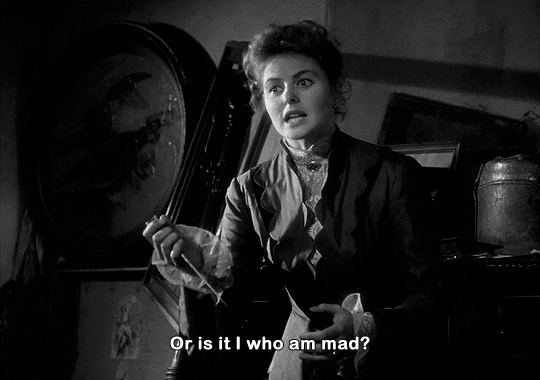
Another point I found interesting was the emergence of Men’s Rights Movement which rooted in the early 1970’s. After witnessing the emergence of the Women’s Rights Liberation movement, men’s rights scholars acknowledged the harm that sexism had on women but accentuated how strict gender roles and a patriarchal society were just as harmful on men.
The early goal of this movement was to “attract men to feminism by constructing a discourse that stressed how the male role was impoverished, unhealthy, and even lethal for men” (A. E. Marwick and R. Caplan, 2018, p 546). In the 1980’s the movement experienced a harsh divide where one side was still fighting against sexism, but the other side chose to embrace traditional masculinity and values.
I found this especially interesting as I remember a couple of years ago there was a big surge of men and surprisingly women, advocating for the Men’s Rights Movement as a way to belittle the Feminist and #MeToo Movement. It was renamed as ‘Meninism’ but quickly died down due to and unknown cause. I find this quite humorous as they did not understand the original intent of the movement and decided to take an opposing road.
TRIGGER WARNING: SEXUAL ASSUALT, DOMESTIC VIOLENCE

References:
Alice E. Marwick & Robyn Caplan, 'Drinking male tears: language, the manosphere, and networked harassment' Feminist Media Studies Volume 18, 2018 - Issue 4: Pages 543-559
Jessamy Gleeson, Research Officer, School of Global, Urban & Social Studies, RMIT University, 'What does Gaslighting Mean?’ The Conversation, 2018, <https://theconversation.com/explainer-what-does-gaslighting-mean-107888>
0 notes
Text

Nur Masalha (نور ﺍﻟﺪﻳﻦ مصالحة), The Palestine Nakba. Decolonising History, Narrating the Subaltern, Reclaiming Memory, Zed Books, London, 2012



Cover Design: Alice Marwick
#graphic design#history#historiography#book#cover#book cover#nur masalha#centre for palestine studies#alice marwick#zed books#2010s
37 notes
·
View notes
Text
Week 10: Have women had it too good for too long?
The focus for this week is online governance and conflict on social media. Also the answer to the title is apparently yes according to some men.
The study from this week's reading is divided into two parts. The first part presents data about the frequency and impact of online harassment and the second part uses the data to counteract the concept that students are so-called 'snowflakes'. The focus group of this study is university students in the United Kingdom. (Haslop, 2021)
The secondary source I read, Drinking male tears: language, the manosphere, and networked harassment, also conducted a study to investigate how language was used by "men's rights activists" (which is a phrase that makes me sick thinking about them) to invalidate arguments made in favour of feminism, and to instead reinforce the binaries that exist with gender systems. (Marwick et al, 2018) Their study found that by "setting up feminism - and feminists - as villians, and men as victims, (it) justifies the networked harassment that often emerges from the manosphere." (Marwick et al, 2018) The source sites other papers to assert that the internet has been a powerful tool that allowed the growth of men's rights activism and discourse. (Mary Lilly 2016; Rachel M. Schmitz and Emily Kazyak 2016). By participating in men's rights activism, this goes against the principle of being a true digital citizen, as their actions lack positive motivation and would rather reinforce oppressive societal structures.

As a personal note, there is a prominent figure that is currently being idolised by "men's rights activists" (Andr*w T*te) who has encouraged behaviour such as his fanboys leaving comments on women's Tiktok pages saying "I bet it's bubblegum pink" in reference to a certain sex organ that people who can bear children have. I refuse to dignify this type of behaviour with any form of energy, whether academic or otherwise, as these "men's rights activists" thrive off nitpicking any argument made, to "win" their convoluted argument and justify dangerous mindsets that value women as nothing more than sexual beings and enforce outdated gender roles.
References:
Haslop, C., O’Rourke, F., & Southern, R. (2021). #NoSnowflakes: The toleration of harassment and an emergent gender-related digital divide, in a UK student online culture. Convergence, 27(5), 1418–1438.
Marwick, Alice E. & Caplan, Robyn 'Drinking male tears: language, the manosphere, and networked harassment' Feminist Media Studies Volume 18, 2018 - Issue 4: Pages 543-559
0 notes
Text
Week 10 – Digital citizenship, online harassment and governance
Online harassment has always been a prevalent issue within the subject of digital citizenship, defined as “threats or other offensive unwanted behaviours targeted directly at others through new technology channels” (Haslop et al. 2021, p.1420. The impact of online harassment is that it negatively influences users, turning them away from engagement with digital spaces.
This week's reading analysed the subject of ‘snowflakes’ online and sought to investigate whether the implications of the term are as true as they seem, the term snowflakes has been used an increasingly popular label for those easily offended online, particularly university students (Haslop et al. 2021, p.1419). The author contends that a lack of research has led to the term being generalised and may not be as accurate as the public believes, revealing the issue of gender-based abuse marginalising women’s ability to interact with digital communities. (Haslop et al. 2021, pp.1420-1421).
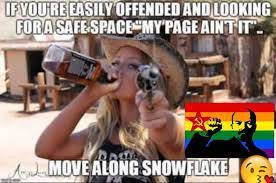

(Many cringeworthy examples can be found online showcasing the term used as a dismissive insult)
In futher reading, the idea of ‘the manosphere’ and men's rights groups online were discussed, the manosphere is seen as an online community “in opposition to the discourse and rhetoric of feminism” (Marwick & Caplan, 2018, p.553). Using Reddit as an example, subreddits such as r/mensrights are public spheres that directly oppose the importance of women’s issues.

(Graphic via Internet Matters: https://www.internetmatters.org/hub/news-blogs/what-is-the-manosphere-and-why-is-it-a-concern/)
So how can this issue be combatted to encourage equality in online interaction? Social media governance is an important responsibility, falling under the providers of online platforms such as Instagram or Twitter. Many social media platforms provide guidelines to what kind of behaviour is identified as abusive or harassment.
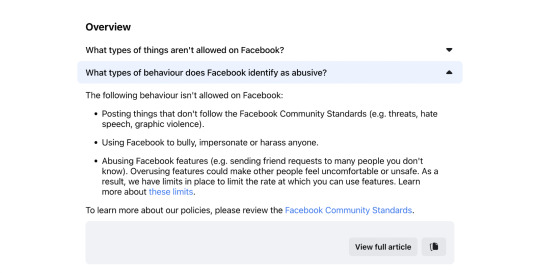
(Facebook’s guidelines on abusive behaviour, Facebook Community Standards, Meta.)
While these guidelines exist, it is clear that more work is required as there appears to be a culture of toxic behaviour, particularly towards women on social media, affecting equal representation and enjoyment digital citizenship.
Haslop, C., O’Rourke, F., & Southern, R. (2021). ‘#NoSnowflakes: The toleration of harassment and an emergent gender-related digital divide’, in a UK student online culture. Convergence, 27), 1418–1438.
Alice E. Marwick & Robyn Caplan, (2018). 'Drinking male tears: language, the manosphere, and networked harassment' Feminist Media Studies Volume 18, 2018 - Issue 4: Pages 543-559.
0 notes
Text
Social Media Truths: References and Further Reading
For Further Reading: articles and topics:
TikTok bans distract from wider privacy concerns, says digital rights advocate
Your Social Media Is (Probably) Being Watched Right Now, Says New Surveillance Report
Facebook accused of conducting mass surveillance through its apps
References:
Works Cited
Child, Jeffrey T., and Shawn C. Starcher. 2016. “Fuzzy Facebook Privacy Boundaries: Exploring Mediated Lurking, Vague-Booking, and Facebook Privacy Management.” Computers in Human Behavior 54: 483–90. https://doi.org/10.1016/j.chb.2015.08.035.
De Leyn, Tom, Ralf De Wolf, Mariek Vanden Abeele, and Lieven De Marez. 2022. “In-Between Child’s Play and Teenage Pop Culture: Tweens, TikTok & Privacy.” Journal of Youth Studies 25 (8): 1108–25. https://doi.org/10.1080/13676261.2021.1939286.
Lupton, Deborah, and Ben Williamson. 2017. “The Datafied Child: The Dataveillance of Children and Implications for Their Rights.” New Media & Society 19 (5): 780–94. https://doi.org/10.1177/1461444816686328.
Marwick, Alice, Claire Fontaine, and danah boyd. 2017. “‘Nobody Sees It, Nobody Gets Mad’: Social Media, Privacy, and Personal Responsibility Among Low-SES Youth.” Social Media + Society 3 (2): 205630511771045–. https://doi.org/10.1177/2056305117710455.
Stoilova, Mariya, Sonia Livingstone, and Rishita Nandagiri. 2020. “Digital by Default: Children’s Capacity to Understand and Manage Online Data and Privacy.” Media and Communication (Lisboa) 8 (4): 197–207. https://doi.org/10.17645/mac.v8i4.3407.
When Online Gets Out of Line Privacy, Make an Informed Online Choice. 2006. Information and Privacy Commissioner/Ontario : Facebook.
0 notes
Text
Bibliography
Bucher, Taina. 2018. If . . . Then: Algorithmic Power and Politics. Oxford: Oxford University Press.
Carter, Daniel. 2016. "Hustle and Brand: The Sociotechnical Shaping of Influence." Social Media + Society 2. no.3: 1-12. https://doi.org/10.1177/2056305116666305
Cheney-Lippold, John. 2011. "A New Algorithmic Identity: Soft Biopolitics and the Modulation of Control." Theory, Culture & Society 28, no.6: 164-181. https://doi.org/10.1177/0263276411424420
Deleuze, Gilles. 1992. "Postscript on the Societies of Control." October 59: 3-7. https://www.jstor.org/stable/778828
Feldman, Zeena. 2021. "‘Good food’ in an Instagram age: Rethinking hierarchies of culture, criticism and taste." European Journal of Cultural Studies 24, no.6: 1340-1359. https://doi.org/10.1177/13675494211055733
Goffman, Erving. 1956. The Presentation of Self in Everyday Life. New York, NY: Doubleday.
Herman, Jenny L. 2017. "#EatingfortheInsta: A Semiotic Analysis of Digital Representations of Food on Instagram." Graduate Journal for Food Studies 4, no.2: 21-32. https://gradfoodstudies.org/2017/11/11/eating-for-the-insta/
Kitiarsa, Pattana. 2010. "Toward a Sociology of Religious Commodification." In The New Blackwell Companion to the Sociology of Religion, edited by Bryan S. Turner, 563-583. Oxford: Blackwell Publishing Ltd.
Marwick, Alice E., and danah boyd. 2011. “I tweet honestly, I tweet passionately: Twitter users, context collapse, and the imagined audience.” New Media & Society 13, no.1: 114-133. https://doi.org/10.1177/1461444810365313
Nagy, Peter, and Gina Neff. 2015. “Imagined Affordance: Reconstructing a Keyword for Communication Theory.” Social Media + Society 1, no.2: 1-9. https://doi.org/10.1177/2056305115603385
Rodgers, Harry, and Emily Lloyd-Evans. 2021. "Intimate Snapshots: TikTok, Algorithm, and the Recreation of Identity." Anthways 1, no.1: 11-22. https://doi.org/10.5281/zenodo.5515620
Sontag, Susan. 2019. On Photography. London: Penguin.
Zaid, Bouziane, Jana Fedtke, Don Donghee Shin, Abdelmalek El Kadoussi, and Mohammed Ibahrine. 2022. "Digital Islam and Muslim Millennials: How Social Media Influencers Reimagine Religious Authority and Islamic Practices." Religions 13, no.4: 1-15. https://doi.org/10.3390/rel13040335
1 note
·
View note